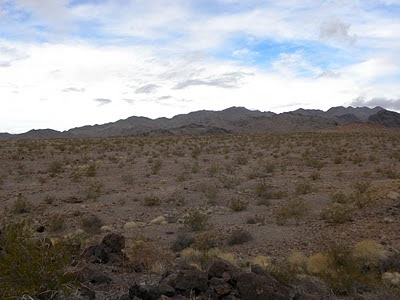First Solar Looking to Invest in Habitat Destruction?
According to a Reuters article, First Solar Inc may be considering purchasing development rights for one or more of Tessera Solar LLC's projects in California's deserts. Both of Tessera Solar's projects -- Imperial Valley and Calico--are in legal limbo and Southern California Edison withdrew its power purchase agreement from the Calico Solar power project, according to the Wall Street Journal. If First Solar were to invest in either project, they could face significant hurdles, although the company does not seem to be shying away from projects that will severely fragment the Mojave and Sonoran deserts.
The Calico and Imperial Solar projects may be up for grabs because Tessera Solar LLC appears unable to develop the sites with its own resources. While Tessera Solar LLC's lack of cash and unreliable technology (Stirling "SunCatchers") are probably the biggest factors contributing to the company's doomed state, its poor choice of locations with high ecological and cultural value cast doubt on the future of its proposed projects. Tessera's Imperial Valley project was halted by a judge earlier this month after the Quechan Tribe sued the Department of the Interior for approving the project absent a thorough review of the site's cultural significance. Tessera Solar chose a site that contained over 400 Native American cultural landmarks, including burial grounds, and the Department of the Interior failed to properly consult with the Quechan Tribe before hastily approving Tessera's project.
Tessera's Calico Solar power project was under threat of legal action from the Sierra Club and California Union for Reliable (CURE) because the project would kill or displace at least 22 desert tortoises and a rare desert wildflower. SCE's withdrawal of the power purchase agreement from the Calico project could be one of the final nails in the coffin, although other companies could eventually seek to build on the same site.
underestimate the potential ecological damage. Portions of the site appear to support a dense tortoise population, with 22 active burrows spotted in one survey alone.
First Solar is also the proponent of two major solar installations proposed for the beleaguered Ivanpah Valley in the eastern Mojave Desert. The Silver State and Stateline project could destroy nearly 15 square miles of pristine desert habitat that hosts a significant breeding population of desert tortoise. The Department of the Interior has not yet issued a decision on the largest portion of the Silver State project, out of concern for the ecological damage the project would cause. Hopefully First Solar will turn its attention to projects on already disturbed land, or apply its photovoltaic technology to projects in cities.
The Calico and Imperial Solar projects may be up for grabs because Tessera Solar LLC appears unable to develop the sites with its own resources. While Tessera Solar LLC's lack of cash and unreliable technology (Stirling "SunCatchers") are probably the biggest factors contributing to the company's doomed state, its poor choice of locations with high ecological and cultural value cast doubt on the future of its proposed projects. Tessera's Imperial Valley project was halted by a judge earlier this month after the Quechan Tribe sued the Department of the Interior for approving the project absent a thorough review of the site's cultural significance. Tessera Solar chose a site that contained over 400 Native American cultural landmarks, including burial grounds, and the Department of the Interior failed to properly consult with the Quechan Tribe before hastily approving Tessera's project.
Tessera's Calico Solar power project was under threat of legal action from the Sierra Club and California Union for Reliable (CURE) because the project would kill or displace at least 22 desert tortoises and a rare desert wildflower. SCE's withdrawal of the power purchase agreement from the Calico project could be one of the final nails in the coffin, although other companies could eventually seek to build on the same site.
underestimate the potential ecological damage. Portions of the site appear to support a dense tortoise population, with 22 active burrows spotted in one survey alone.
 |
| Desert Tortoise on the Desert Sunlight project site. Photo: BLM Draft EIS |



Comments
Post a Comment